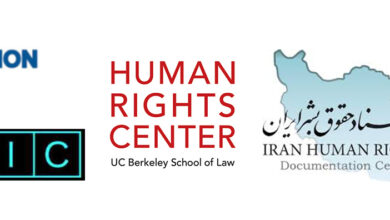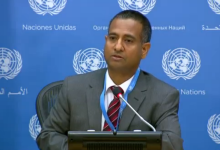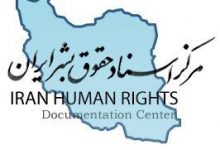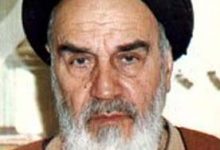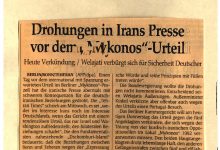Aadel Collection
Attacks on the Press 2007: Iran
Attacks on the Press 2007: Iran- Conntdttee to Protect Journalists org/2008/02/attacks-on-tlc-press-2007-iranphp
C Committee to ProtectJournalists
Defending Journal is: s Worldwide
Attacks on the Press 2007: Iran
I RAN
Iran's troubled economy weakened President Mahmoud Ahmadinejad's power at home, with protests spilling into the
streets and intellectuals, activists, and students expressing dissent in the media. Silencing the uproar became essential
for Ahmadinejad, prompting authorities to intensify a media crackdown that had been waged by conservative forces for a
decade. Iran became the world's fourth-leading jailer of journalists in 2007, with one writer on death row and 11 other
journalists imprisoned when CPJ conducted its annual census on December 1.
Journalists had to tread carefully in their reporting to avoid arrest or the closure of their publications. Most adhered to
official orders banning coverage of the riots that followed the government's abrupt decision in June to restrict fuel
supplies for six months. Explicit restrictions on coverage of the ailing economy, antigovernment demonstrations, and
nuclear development—coupled with prevailing self-censorship—left little room for independent news reporting. Minister of
Culture and Islamic Guidance Mohammad Hossein Saffar-Harandi went so far as to accuse the press of a “creeping
coup” to overthrow the regime, the Iranian Student News Agency reported.
The government imprisoned more than 20 journalists during the year, some without charge, for periods ranging from
days to months. Adnan Hassanpour, former editor for the now-defunct Kurdish-Persian weekly Aso, faced a death
sentence handed down in mid-July. A Revolutionary Court convicted him of endangering national security and engaging in
propaganda against the state, one of his attorneys, Sirvan Hosmandi, told CPJ. Hosmandi said the charges against
Hassanpour were not proved in court and were supported with merely a report from security officials. An appeals court
upheld the conviction, finding that Hassanpour had engaged in espionage. Hassanpour's sister, Leyla, told CPJ that she
believed his critical writings were the reason for the charges.
The longest detained was Mohammad Hassan Fallahiyazadeh, a reporter for the state-run Arabic-language satellite
channel Al-Alam and several other Arab media outlets. Authorities arrested Fallahiyazadeh on November 1, 2006, in
connection with his reports on the government's harsh treatment of Iranian Arab protestors in the Khuzestan provincial
capital, Ahwaz, according to the organization Human Rights Activists in Iran (HRAI). A Revolutionary Court gave
Fallahiyazadeh a three-year prison sentence in April for distributing propaganda against the Islamic regime and
communicating with opposition groups abroad, according to HRAI and Amnesty International. Fallahiyazadeh, who
belongs to Iran's Arab minority, was denied access to a lawyer, HRAI said.
Parnaz Azima, a journalist with the U.S.-backed Radio Farda, was among four people of dual Iranian-American
citizenship who were detained during the year. Authorities confiscated her passport upon her arrival at Tehran's airport
on a trip to see her ailing mother in late January. By May, the Special Security Bureau of the Revolutionary Court's Public
Prosecutor's Office had charged her with disseminating propaganda against the Islamic Republic, Azima's lawyer,
Mohammad-Hossein Aghasi, told CPJ. Radio Farda, broadcasting from Prague, Czech Republic, is jointly run by the
U.S. government-funded Radio Free Europe/Radio Liberty (RFE/RL) and Voice of America. Officials ordered Azima to
1 of3 03/08 2010 14:51
Attacks Oil tile Press 2007: Iran - Committee to Protect Jorniialists .org/2008/02/attacks-on-the-press-2007-iraiiphp
post US$550,000 in bail, which the journalist paid by putting up her mother's Tehran home as collateral. Authorities
unexpectedly returned Azima's passport in early September, allowing her to leave Iran later that month, according to
RFE/RL.
The government retaliated against those journalists who seemingly threatened Iran's insularity with their reporting for
foreign news services or their travel abroad for work-related events. Supreme Leader Ayatollah Ali Khamenei claimed
that the United States was using such journalists to overthrow the regime.
In late January, security officials at Tehran's airport arrested freelance journalists and women's rights activists
Mansoureh Shojai, Talat Taghinia, and Farnaz Seifi as they waited to board a flight to India for a journalism training
workshop, according to news reports. Human rights lawyer and Nobel Peace Prize Laureate Shirin Ebadi said authorities
charged them with acting against national security and released them on bail, Reuters reported.
All three women supported a campaign that seeks to amass a million signatures urging the reform of Iranian laws that
discriminate against women. Authorities responded to such efforts with intolerance, beating and arresting women's rights
activists during peaceful demonstrations. In November, an Islamic Revolutionary Court charged online journalist and
women's rights activist Maryam Hosseinkhah with disturbing public opinion, engaging in propaganda against the regime,
and spreading false news, according to the Web site Change for Equality. Defense lawyer Ebadi told Change for
Equality that her client was jailed because of her articles on women's rights for online sites and newspapers.
The government also targeted ethnic Kurdish journalists for arrest. Along with Hassanpour, at least three others were
imprisoned for their work, according to CPJ research. In July, for example, plainclothes security officials arrested
journalist and Kurdish human rights activist Mohammad Seddigh Kaboudvand at his Tehran office, according to Amnesty
International and CPJ sources. Authorities accused Kaboudvand, head of the Human Rights Organization of Kurdistan
and managing editor of the weekly Payam-e Mardom, with acting against national security and engaging in propaganda
against the state, according to his organization's Web site. Kaboudvand had published articles about torture in Iranian
jails and human rights abuses against Iran's Kurdish minority.
As dissenting Web sites and blogs continued to rise in popularity, the government was quick to shut them down. The
popular conservative news Web site Baztab was blocked twice inside Iran for criticizing Ahmadinejad's policies,
particularly his handling of the economy, Reuters reported. On September 23, a court ordered Baztab's offices closed
after staff continued to update the site for users abroad, according to news reports. The Iranian Labor News Agency
was blocked inside Iran in July for reporting on demonstrations by workers and activists and their arrest, Reuters said.
Savvy Internet users such as the group calling itself Iran Proxy have responded to the government's filtering system by
providing online methods to circumvent site restrictions, RFE/RL reported.
The regime also cracked down on pro-reform student journalists. In May, authorities jailed three student journalists at
Amirkabir University of Technology in Tehran following the distribution of newsletters carrying articles deemed insulting to
Islam, according to news reports. The three students—Majid Tavakoli, Ehsan Mansouri, and Ahmad Ghassaban—said
they had had no involvement in the publications and that a hard-line conservative student group had fraudulently used the
names and logos of legitimate student publications as a dirty trick, news reports said. The students, who received
sentences of two to three years following a closed court session in November, were subjected to torture during their
six-month detention, according to news reports that quoted their families. The school's administration banned all student
publications in the aftermath of the incident.
Critical journalists found themselves prone to violent attacks. In early November, two journalists were stabbed by
unknown assailants in separate incidents. Two perpetrators stabbed Reza Avazpour, editor-in-chief of the sports weekly
2 of3 03/08 2010 14:51
Attacks on the Press 2007: Iran- Conntdttee to Protect Journalists org/2008/02/attacks-on-tlc-press-2007-iranphp
Varzeshi, as he was leaving the paper's offices in the southeastern city of Kerman, according to news reports. Avazpour
was seriously wounded and needed several hours of surgery. The attack came after he had received a number of
threats made by a group identifying itself as Allah's Soldiers, according to the news agency Adnkronos International.
Varzeshi had published investigative articles that were critical of the directors of Iran's football federation, the agency
said. The attackers accused Avazpour of being a “servant of the Americans,” the agency reported, and scolded him for
being critical of Ahmadinejad. Assailants also stabbed Abaselat Abed, managing editor of the daily Mardomsalari
(Democracy) in Karaj, a city west of Tehran, in front of the paper's offices, Mardomsalari reported.
The government continued to suspend publications because of their critical reporting or pro-reform slant. CPJ research
showed that authorities closed at least 11 publications, some of them indefinitely. The Press Supervisory Board, under
the Ministry of Culture and Islamic Guidance, suspended the pro-reform daily Ham-Mi / ian and revoked the license of the
daily Mosharekat in early July. Iran's leading critical daily, Shargh, was shut down in August for publishing an interview
with Saqi Qahreman, an exiled Iranian poet accused by the regime of supporting homosexuality, according to news
reports. Shargh had just resumed publication in May, when a previous suspension lapsed.
February 5, 2008 11:08 AM ET I Permalink )
3 of3 03/08 2010 14:51

